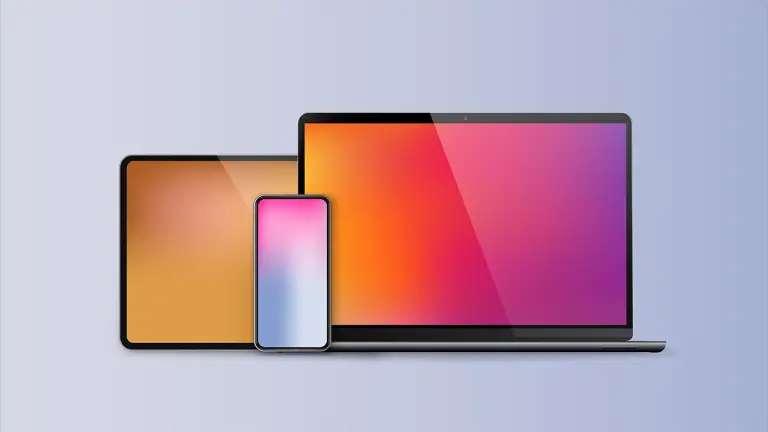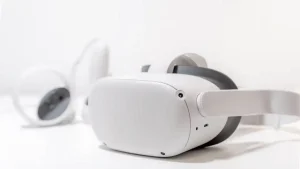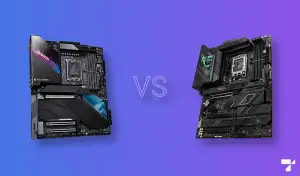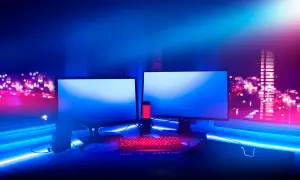Yes, smartphones and tablets are computers. Any device that processes input and gives output is known as a computer. Via their touch screen interface, smartphones and tablets convert raw data into meaningful information which is the prime operation of a computer. Therefore, smartphones and tablets are essentially mini-computers.
Similarities between smartphones, tablets, and computers
Generally, smartphones, tablets, and computers are similar in terms of design. Even the simplest of the phones fall in the category of computers since they have internal memory, computing power, input and output devices. Although there is a significant and noticeable difference in the sizes of smartphones, tablets, and computers, the basic principle is the same.
The engineering behind smartphones and tablets is the integration of microprocessor technology with a mobile network. This allows them to perform similar functions of a PC and have similar features. However, smartphones and tablets have smaller sizes making them less capable of more computationally demanding tasks when compared to computers. But with that smaller form factor comes the added convenience of far more portability and mobility.
Hardware Components
The internal architecture and hardware components of smartphones, tablets, and computers are quite similar. They all contain a CPU, memory, storage, motherboard/circuit board, and display functionality. These overlapping components allow smartphones, tablets, and computers to function similarly to one another.
Software Utilization
Smartphones, tablets, and computers are also similar in that they use an operating system. The operation systems allow these devices to run programs or applications that perform different functions. Because of this similarity, many software applications that work on computers are also ported to work on mobile devices such as smartphones and tablets. Desktop and laptop computers usually run Microsoft Windows, macOS, or Linux operating systems. Operating systems of smartphones and tablets are mostly based on Android and Apple macOS.
Differences between smartphones, tablets, and computers
The difference between smartphones, tablets, and computers lies in various parameters, including size, features, and usage.
Physical Size
The most obvious and significant difference between smartphones, tablets, and personal computers is physical size. Computers are voluminous devices that allow for more computing power, while smartphones and tablets are thin, sleek, and lightweight for more portability and mobility.
Smartphones and tablets are ideal for outdoor usage as they have internal batteries that can be charged anytime, anywhere. Computer systems such as desktops and laptops are more stationary, with desktop computers needing to remain plugged in a wall outlet during use.
Computing power
Due to significant size differences, the computing power of desktops and laptops is much more than smartphones and tablets. Desktops and laptops have more computing cores/threads, better graphical processing power, etc. that makes them far more powerful than smartphones. This allows desktops and laptops to run more computational demand tasks and a wide range of applications than smartphones and tablets.
Input/Output Interface
The Input and output devices of smartphones and tablets compared to computers are very different. Computers have keyboards and monitors as their input/output devices respectively, while touchscreens in smartphones are used not only for output display purposes; instead, they are also used for input as well. Smartphones and tablets contain small virtual on-screen keyboards. Though typing on them can be cumbersome for some users due to the tiny virtual keys; however, increased mobile screen sizes and responsiveness have made displays more usable.
Software Compatibility
A notable difference between computers and smartphone/tablets are the operating systems and software they can run because of their architectural and computing power differences. Software programs of computer systems are designed to work with operating systems like Microsoft Windows, Apple, and Linux OS. In contrast, smartphone applications work with mobile operating systems like Android and macOS. Mobile applications are designed keeping in mind the limitations of mobile devices like smartphones and tablets. As a result, the underlying operating systems of computers are quite different from mobile operating systems.
Peripheral Devices
External peripheral devices like printers, speakers, digital cameras, and external hard drives can easily be utilized by computers, while smartphones and tablets do not support most external peripherals yet.
Storage capacity
The hard drive capacity of a computer can range anywhere from 125GB to well above several terabytes depending on its configuration. While the commonly available storage capacity of smartphones and tablets ranges between 64 and 250GB.Though some devices support the addition of extra memory via an expansion slot.
Final Thoughts
Although some similarities and some differences exist between smartphones, tablets, and computers, one cannot deny that smartphones and tablets retain the functionality, architectural design, and essence of computers. In closing, smartphones and tablets are indeed computers.



